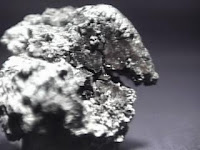The Bacteria that can't be Killed.
A bacteria known as Carbapenem-Resistant Enterobacteriaceae (CRE) is becoming a rapidly dangerous issue in health care facilities such as hospitals and nursing homes. This particular type of bacteria, named for its ability to fight off carbapenem antibiotics, first appeared in 2001. It's deadliness comes from its resistance to any and every type of antibiotic. The death rate of a CRE infection is about 40%, which is much higher than others infections such as MRSA. So far there has been no hope of creating a solution. There is not a high incentive for drug companies to create new drugs because the CRE are able to mutate and adapt their resistance. Many of the cases of CRE also go unrecognized because smaller facilities do not have the capability to screen and test for this particular type of bacteria. The greatest fear is that CRE will spread from health care facilities into the general public. The only thing that can be done is to try and prevent its spread. CRE as of now is an impossible enemy.









